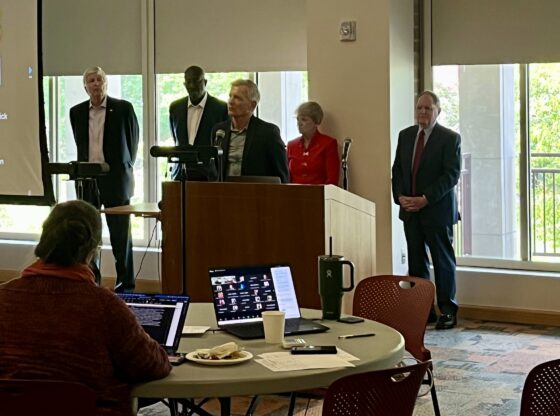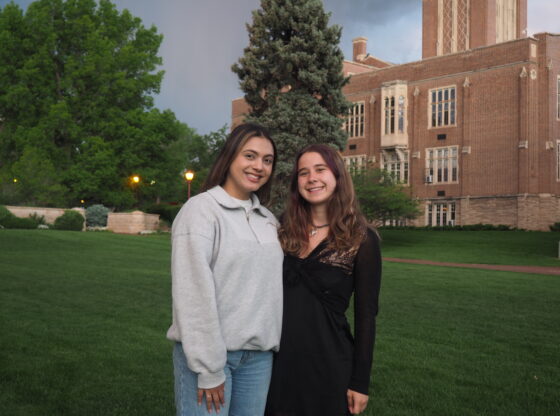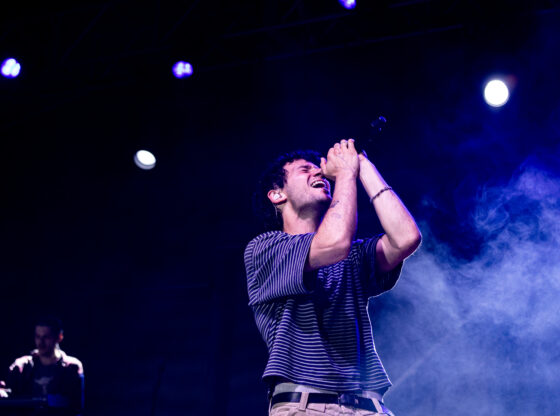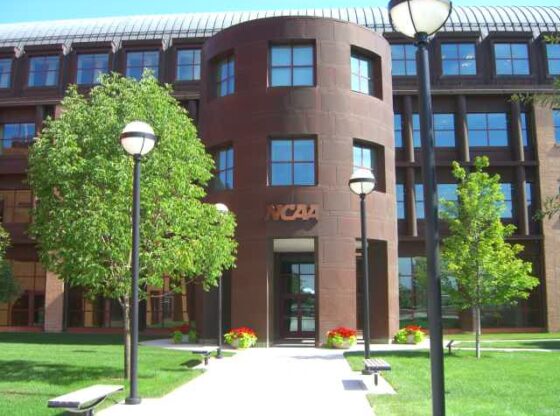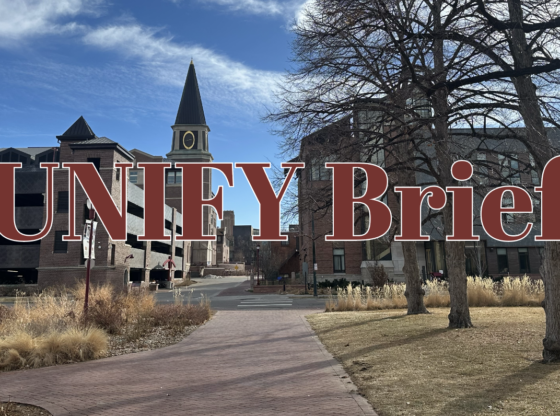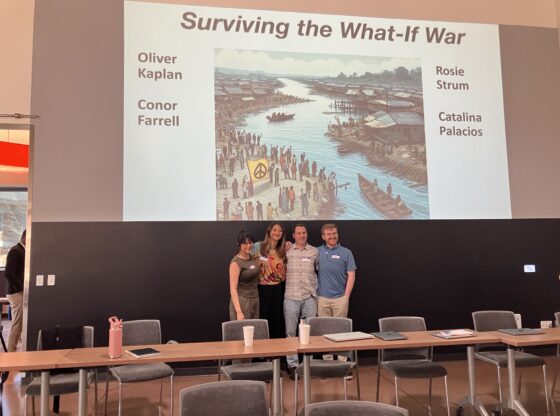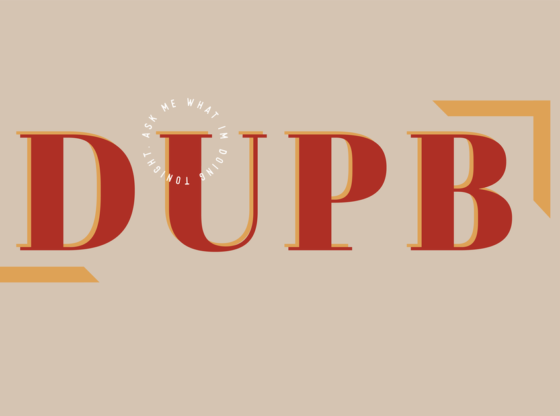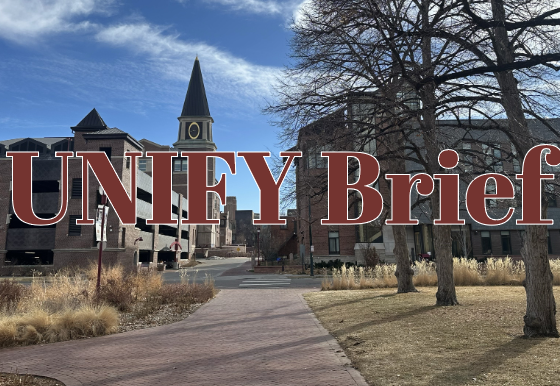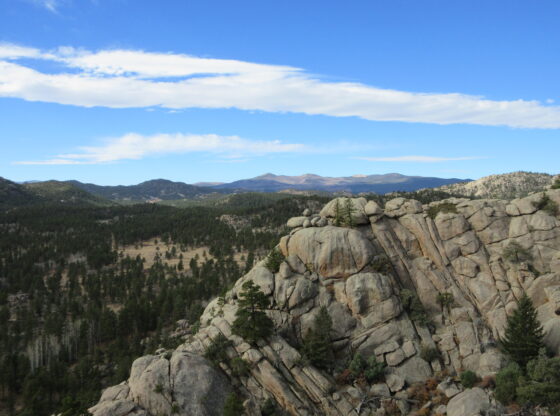The rhythmic beating of drums echoed through Hamilton Gymnasium as Indigenous dancers in vibrant outfits and jewelry danced, ate, shopped and laughed, celebrating the 14th annual New Beginnings Powwow at the University of Denver.
Hosted by the Native Student Alliance (NSA), this gathering has become a cherished tradition that bridges Indigenous communities with the DU student body and beyond. Rosie Molina, co-chair of NSA explains the powwow’s significance in Denver.
“We want to pay respect and tribute to our Cheyenne and Arapaho relatives, but also just have it as an event to bring the community together,” explained Molina.
Attendees and participants set up lawn chairs around the dance circle and filled the bleachers. Beyond the dancing and music, the event featured numerous vendors selling handcrafted jewelry, stickers, CBD products, t-shirts, blankets and skirts — an entire gym filled with Indigenous arts and crafts.
NSA co-chair Patrick Higgins described the event as a gathering for community. “We represent so many different nations, so it’s just kind of like a pan-indigenous event that brings the community together,” said Higgins.
Throughout the day, MC Stevie LaPointe guided attendees through the proceedings, while speaker Andy Cozad from Oklahoma provided beautiful commentary and storytelling, telling the audience the significance of the songs, dances and the overall event.
“We want the people to feel good. If they have troubles, when they hear these songs, they heal,” Cozad shared before the Grand Entry. “Listen to our music and watch our dances, and somehow you’ll feel something that is unexplainable.”
He explained that while powwow songs differ from ceremonial and traditional songs, many originated from ceremonies.
“We’re keeping them alive the best way we can,” he noted.
After patrons had a chance to explore the vendors and eat food provided by DU Duggy and other food trucks, the day’s events continued with Gourd Dancing led by Head Gourd Dancer John Cozad. Initially starting with about ten dancers tapping their feet to the beat, more participants joined throughout the session, approaching the head dancer with a cash offering before entering the circle. The drumming intensified as John Cozad came forward chanting, with everyone keeping the rhythm with their bodies and instruments.
Before the official Grand Entry, Andy Cozad participated in a drum circle, singing in unison with others while dancers moved in the center. LaPointe noted that “every day is a good day to powwow” as participants prepared for the procession.
The Grand Entry, a formal beginning to the powwow, featured dancers lined up behind the color guard of Indigenous veterans carrying flags. LaPointe shared that 20% of today’s military consists of Indigenous people from across Turtle Island, with Indigenous women comprising 20% of all women in the U.S. armed forces — a statistic that was met with a round of applause from the audience.
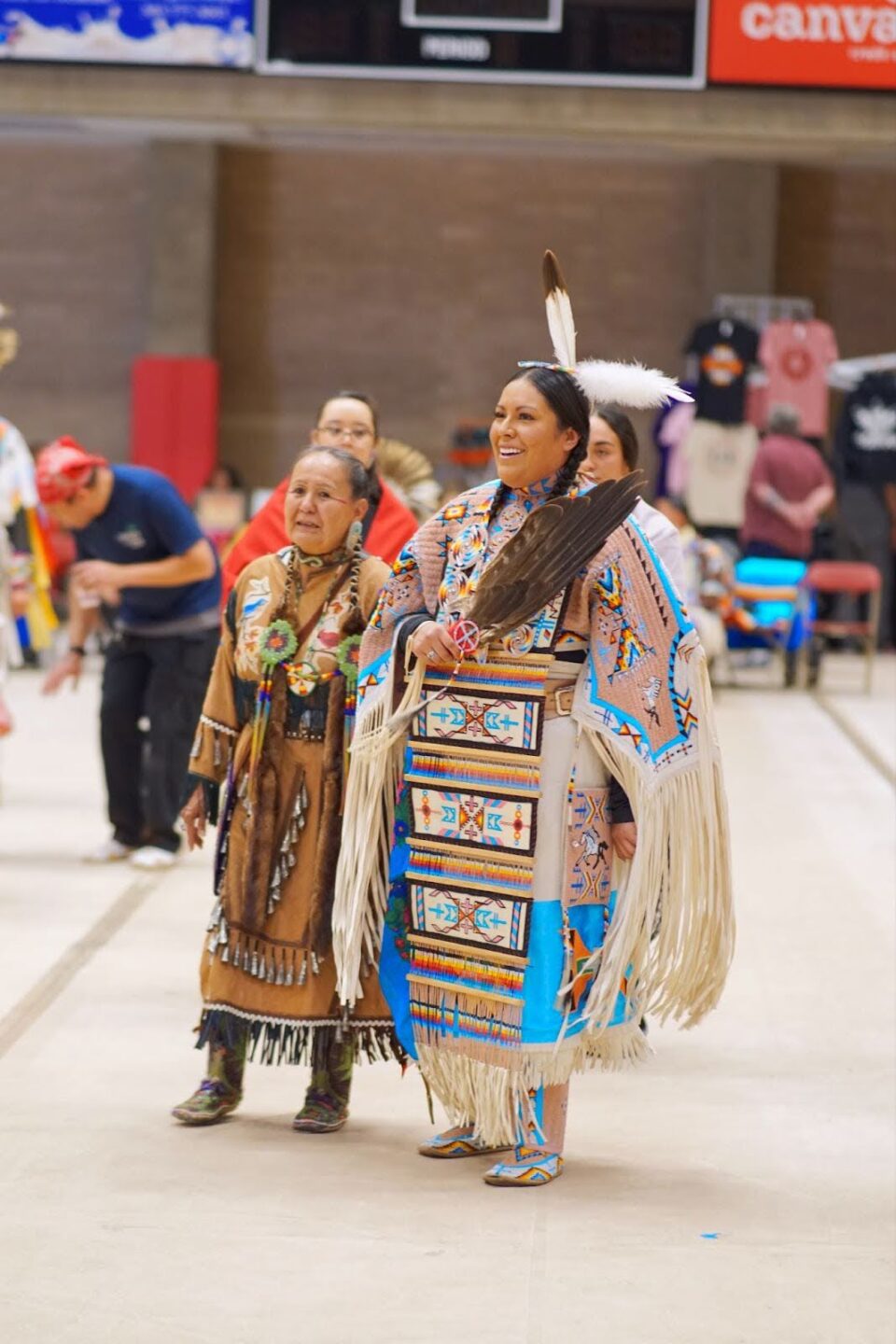
Photo Credit: Manuel Aragon
A distinctive feature of DU’s powwow was the large teepee outside the gym, put up by NSA and community members the morning of the event.
Molina elaborated on the artwork on the teepee: “The designs are significant to us as individuals. We all contributed something,” she said, as she pointed out paintings of pottery, the Navajo Tree of Life, corn and a turtle.
“There’s just so many different things that recognize us as individual people, but also our Native nations,” said Molina.
The co-chairs explained that the teepee also holds a deeper significance.
“It’s just reclaiming sovereignty. And I think it’s even more important to show the land back message,” said Molina. “We will never stop advocating for their [DU’s] removal of the pioneer moniker and for our lands.”
For graduating seniors Molina and Higgins, who have been involved in organizing the event for four years, this powwow marked a significant yet bittersweet transition. During the day, graduates from NSA were honored and students stepping into leadership positions were acknowledged.
“It’s a pretty big deal. We’ve seen four years of this powwow now, and it’s great to be able to head it and be able to support it and hang out with everyone,” Higgins said.
Molina shared her favorite aspects of the powwow. “I love the chaos. I love hearing the music. I love seeing my friends and family. But I also just love spending the day with my friends in NSA and just being able to enjoy the stress together. It’s a very stressful day, but it’s just amazing in its own way,” she said.
She expressed optimism, seeing younger members taking initiative.
“To see our younger cohorts taking over the stuff we’ve done over the past few years….it’s a good feeling,” said Molina.
The powwow featured various dance competitions throughout the day, including categories for Tiny Tots, Juniors, Teens, Golden Age and specific competitions like Women’s Fancy Shawl Special and Dewayne Standing Bear’s Teen Grass Special.
Andy Cozad explained the meaning behind the “giveaway” tradition, which occurred before the Grand Entry. He announced that Indigenous people “give something because in return we want something back. It’s called a blessing. It’s not always about money; it’s about what comes from your heart.”
During acknowledgments, several leaders and coordinators were recognized, including Arena Director Sid Whiting, Head Man Judge Charlie Red Cloud, Head Women Judge Raelene Whiteshield, John Cozad, Head Man Dewayne Standing Bear, Head Woman Keya Standing Bear Light, Powwow chairs Isabella Fridia and Elizabeth Standing Bear and the color guard.
For those new to powwow traditions, Molina emphasized the importance of active engagement.
“As Native people, we say, you learn by doing. So just participating, being active, listening and watching is really important.”
Hosting a powwow on a predominantly white campus offers community members a unique and immersive cultural experience.
“Being able to experience a Powwow is one thing that the majority of people in America don’t do. They don’t have the opportunity to, or they don’t choose to,” said Higgins.
As the 14th annual New Beginnings Powwow concluded, it left behind not just memories of colorful regalia and beautiful music and chants, but also a deeper connection between communities and a greater understanding of Indigenous cultures and traditions.
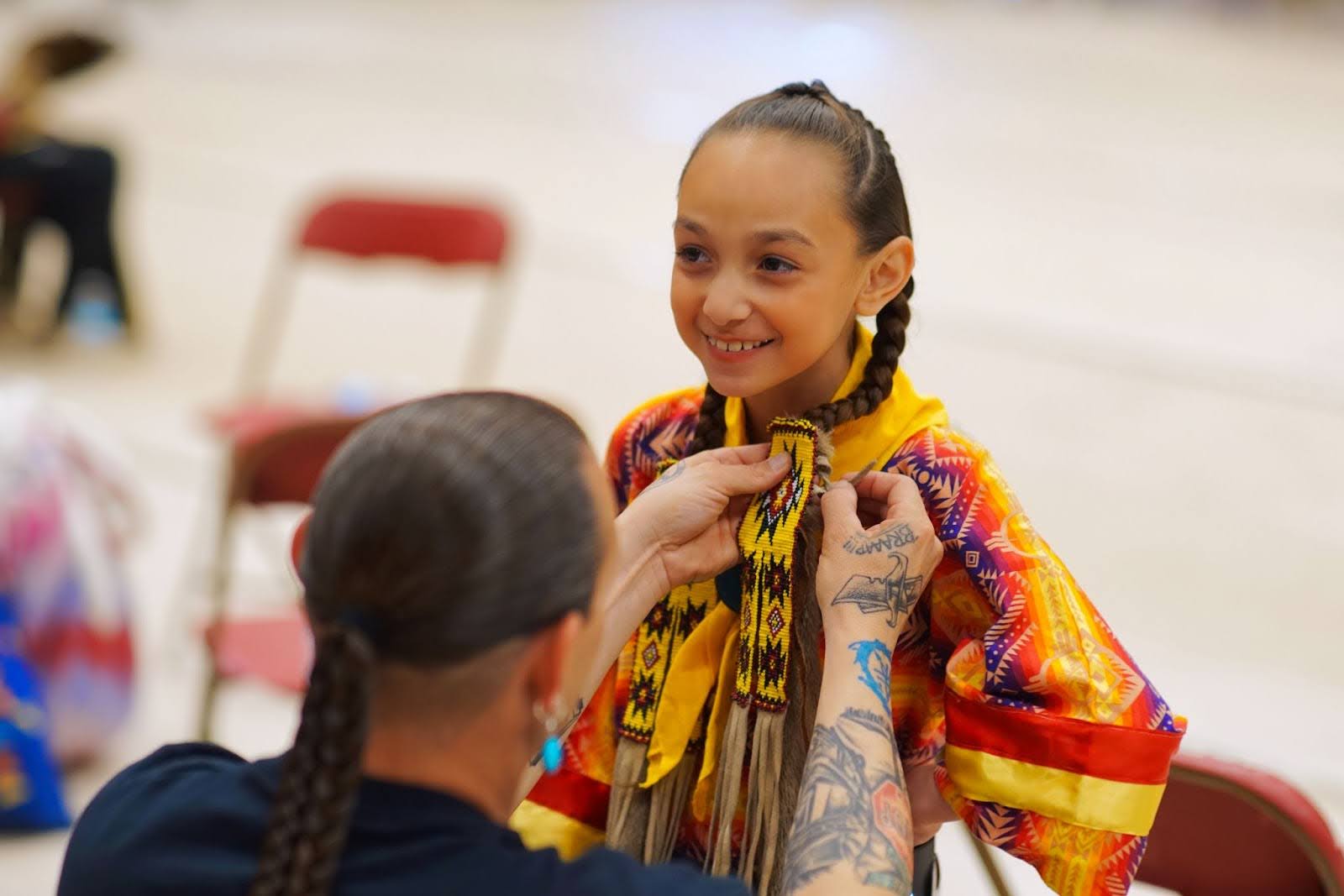
Photo Credit: Manuel Aragon
NSA plans to host a community dinner in collaboration with the Center for a Regenerative Future on May 15, carrying forward the connection fostered at the powwow and all NSA events.



